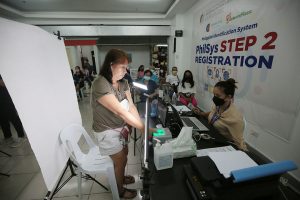THE National ID backlog is currently at 32 million physical cards, the Philippine Statistics Authority (PSA) said on Monday.
PSA Undersecretary and National Statistician Claire Dennis S. Mapa said at a briefing that for the time being, the public “can download their digital national ID.”
The constraint on printing the physical ID cards is the limited capacity of government printing facilities, Mr. Mapa said.
“The maximum number of cards that can be printed on a given day is 80,000; depending on conditions, sometimes it’s lower,” he said.
A total of 51.6 million PhilIDs have been printed and distributed as of the end of May, Mr. Mapa said.
The PSA did not provide a timeline for clearing the backlog.
The digital PhilIDs may be used in transacting with government offices, banks, remittance centers, and electronic merchant platforms.
National ID registrants may access their digital ID through their mobile devices, which will be generated from the national ID official website.
The National ID is expected to improve efficiency in delivering government services, reduce corruption, and dedicate government funds to crucial development programs, National Economic and Development Authority Secretary Arsenio M. Balisacan said during its launch.
“We want to lessen leakages and ensure that public money is spent where it must be spent,” he said. “This reduces opportunities for corruption and enables the government to bypass logistical costs for delivery.”
The PSA also launched the National ID Check platform, where the physical national IDs may also be verified by scanning the QR code found on the card. Organizations may also use the platform to verify the identity of an individual presenting the ID.
As of the end of May, 87.6 million Filipinos have registered for the national ID. The government’s goal is to register the entire population with the Philippine Identification System, Mr. Mapa said. — Beatriz Marie D. Cruz
